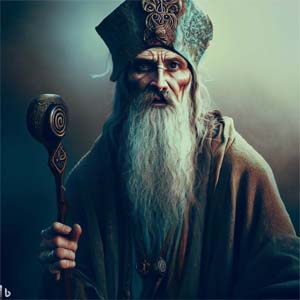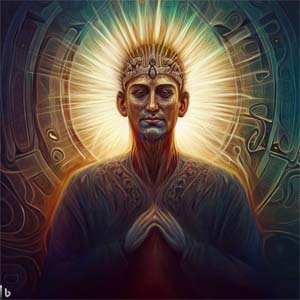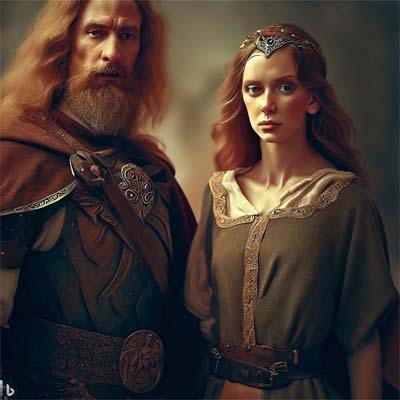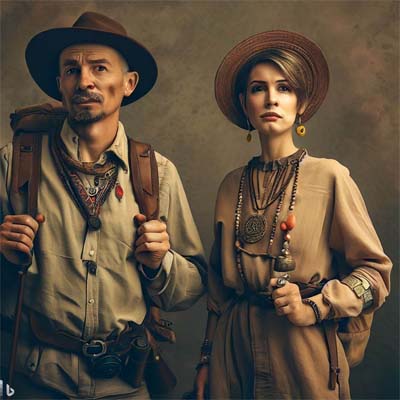Introduction:
Within the realm of psychology, Carl Jung’s theory of archetypes provides valuable insights into the depths of the human psyche. Archetypes, according to Jung, are universal patterns or symbols that exist within the collective unconscious, shaping our thoughts, behaviors, and perceptions. One such archetype is the Ruler, a potent and influential force that embodies authority, leadership, and order. In this article, we will explore the Ruler archetype, its significance, and the transformative potential it holds for individuals who tap into its power.
Understanding the Ruler Archetype:
The Ruler archetype represents the innate desire for control, stability, and influence over one’s life and surroundings. It encompasses qualities such as responsibility, organization, decisiveness, and a strong sense of purpose. The Ruler seeks to establish order, set clear boundaries, and make wise choices for the betterment of oneself and others. This archetype can manifest in various forms, such as political leaders, successful entrepreneurs, and even parents or teachers who take charge in guiding and shaping lives.
Symbolism:
Symbolically, the Ruler is often associated with images of a king or queen, wearing a crown and seated on a throne, embodying regal authority and command. This archetype exudes a sense of confidence, assurance, and strategic thinking. Rulers possess the ability to make difficult decisions with clarity and conviction, providing guidance and direction to those around them. They excel in creating structure, setting goals, and upholding a strong moral compass.
Furthermore, the Ruler archetype promotes qualities of accountability, discipline, and self-control. These individuals understand the importance of managing their emotions, impulses, and desires, ensuring that their actions align with their long-term vision. They inspire others to follow their lead through their charismatic presence and ability to instill a sense of trust and security.
Characteristics of the Ruler Archetype:
The Ruler archetype encompasses several key characteristics that define its essence. These characteristics are often associated with individuals who possess strong leadership qualities, a sense of authority, and a desire to establish order and structure. Here are some of the primary characteristics of the Ruler archetype:
Leadership: The Ruler archetype is synonymous with leadership. Individuals embodying this archetype have a natural inclination to take charge, guide others, and make decisions that benefit the collective. They inspire trust, instill confidence, and have a vision for the future.
Responsibility: Rulers take responsibility for their actions and the well-being of those under their influence. They understand the weight of their role and are accountable for the consequences of their decisions. They prioritize the greater good and strive to create a positive impact.
Organization: The Ruler archetype emphasizes the importance of order and structure. Rulers have a knack for organizing their own lives and environments, as well as facilitating organization in groups and systems. They excel at setting goals, creating plans, and establishing clear boundaries.
Decisiveness: Rulers possess the ability to make decisions with confidence and conviction. They weigh options, gather information, and trust their judgment to arrive at sound choices. Their decisiveness provides a sense of direction and stability to those who follow them.
Authority: The Ruler archetype exudes authority and commands respect. Individuals embodying this archetype have a natural presence and charisma that draws others towards them. They are seen as authoritative figures due to their knowledge, experience, and the way they carry themselves.
Strategic Thinking: Rulers are known for their strategic mindset. They possess the ability to see the big picture, anticipate challenges, and plan for the future. Their strategic thinking allows them to make well-informed decisions and navigate complexities effectively.
Integrity: The Ruler archetype upholds a strong moral compass. Individuals embracing this archetype prioritize ethical conduct, honesty, and transparency. They lead by example and expect the same level of integrity from those around them.
Confidence: Rulers exude a sense of self-assuredness and confidence. They believe in their abilities, convictions, and capacity to overcome obstacles. Their confidence inspires others and creates a sense of trust in their leadership.
Visionary: The Ruler archetype often encompasses a visionary element. Rulers have a clear vision of what they want to achieve and work towards realizing it. They inspire others with their forward-thinking ideas and motivate them to strive for excellence.
Empowerment: Rulers have the ability to empower others. They recognize the potential in individuals and encourage their growth and development. Rulers create an environment where people feel supported, motivated, and empowered to achieve their goals.
It is important to note that these characteristics can manifest differently in individuals embodying the Ruler archetype based on their unique personalities, backgrounds, and contexts. However, these core qualities underpin the archetype’s essence and influence.
Shadow Aspects of the Ruler Archetype:
Like all archetypes, the Ruler has its shadow aspects. When the Ruler archetype is not properly balanced, it can manifest as authoritarianism, control freakishness, or an excessive desire for power. This can lead to the oppression of others, a disregard for differing opinions, and an inability to adapt to change. It is crucial for individuals embodying the Ruler archetype to be mindful of these potential pitfalls and work towards a healthy integration of its positive qualities.
Embracing the Ruler Archetype:
When individuals align with the Ruler archetype in a healthy and balanced way, it can bring about personal and collective transformation. Embracing the Ruler archetype enables individuals to take charge of their lives, make empowered decisions, and create a sense of stability and purpose. It fosters a strong work ethic, effective time management, and the ability to motivate oneself and others towards achieving meaningful goals.
Moreover, the Ruler archetype empowers individuals to step into leadership roles, guiding and inspiring those around them. By embodying the Ruler archetype, one gains the ability to create positive change, establish harmonious relationships, and contribute to the well-being of their communities. It helps individuals become visionaries, driving progress and bringing order out of chaos.
Integration and Development:
Integrating the Ruler archetype requires self-reflection and personal growth. This can be achieved through various means, such as self-awareness practices, leadership development programs, and studying the lives of successful leaders. It is essential to cultivate emotional intelligence, empathy, and a genuine desire to serve others while wielding power responsibly.
Engaging with the Ruler archetype also involves embracing one’s own unique leadership style. Not all rulers are the same; each person brings their individual strengths, values, and perspectives to the table. By recognizing and nurturing their authentic leadership qualities, individuals can forge their own path while inspiring and empowering others.
Additionally, individuals can explore the Ruler archetype through self-exploration techniques such as journaling, meditation, and therapy. These practices allow for a deeper understanding of one’s motivations, values, and goals, enabling individuals to align their actions with their true purpose. By embracing and integrating the Ruler archetype, individuals can unlock their full potential and create a positive impact on both their personal lives and society as a whole.
The Manifestations of the Ruler Archetype:
The manifestations of the Ruler archetype can be observed in various aspects of life, including personal relationships, professional settings, and societal structures. Here are some common manifestations of the Ruler archetype:
Political Leaders: Rulers often emerge as political leaders, taking charge of governing bodies and institutions. They possess the qualities necessary to guide and shape the direction of a nation or community, making decisions that impact the lives of many. Political leaders who embody the Ruler archetype strive to establish stability, enact effective policies, and create a harmonious society.
Business Executives and Entrepreneurs: In the business world, the Ruler archetype can be seen in executives and entrepreneurs who lead organizations with vision and authority. They establish a clear hierarchy, set goals, and make strategic decisions that drive success. Rulers in the business realm inspire and motivate employees, create a culture of efficiency and excellence, and foster growth and prosperity.
Mentors and Coaches: Individuals embodying the Ruler archetype often assume the role of mentors or coaches. They guide and support others on their journeys, helping them discover their potential, set goals, and develop the skills necessary to succeed. Rulers in mentoring roles provide valuable guidance, share wisdom, and empower others to take charge of their lives.
Parents and Guardians: The Ruler archetype can also be observed in parents and guardians who take on the responsibility of nurturing and shaping the lives of their children. They establish rules, provide structure, and make decisions in the best interest of their family. Rulers in the role of parents instill values, teach responsibility, and create an environment of love and stability.
Community Leaders: Within communities, individuals embracing the Ruler archetype often emerge as community leaders. They take initiatives to address social issues, organize events, and guide community members toward positive change. Rulers in community leadership roles aim to create a sense of unity, foster collaboration, and improve the overall well-being of the community.
Teachers and Educators: The Ruler archetype can be seen in teachers and educators who take charge of classrooms and educational institutions. They establish structure, set boundaries, and provide guidance to students. Rulers in educational settings inspire a love of learning, promote discipline, and empower students to reach their full potential.
Organizational Managers: Within the workplace, individuals embodying the Ruler archetype often take on managerial roles. They oversee teams, set goals, and establish efficient systems and processes. Rulers in managerial positions provide direction, ensure accountability, and create an environment conducive to productivity and success.
Nonprofit and Humanitarian Leaders: Rulers can also be found leading nonprofit organizations and humanitarian efforts. They strive to make a positive impact on society, addressing social issues, and advocating for change. Rulers in these roles exhibit a strong sense of responsibility, inspire collective action, and work towards improving the lives of others.
These manifestations of the Ruler archetype highlight its influence and impact in various domains of life. Whether in positions of authority, mentoring relationships, or community leadership, individuals embodying the Ruler archetype bring forth qualities of guidance, responsibility, and the desire to create positive change.
The Ruler Archetype in Society:
The influence of the Ruler archetype extends beyond individual development, as it plays a vital role in shaping societies and institutions. Throughout history, we can observe the presence of Ruler figures who have left indelible marks on their nations and cultures. These leaders, such as Nelson Mandela, Mahatma Gandhi, and Martin Luther King Jr., exemplified the Ruler archetype in their ability to unite people, drive social change, and establish justice and equality.
In political and organizational contexts, the Ruler archetype is instrumental in creating effective governance, promoting ethical leadership, and fostering stability and progress. Rulers in these settings possess the responsibility to make decisions that benefit the collective, while upholding principles of fairness, transparency, and inclusivity. They inspire trust and confidence, galvanizing individuals towards a shared vision and common goals.
Conclusion:
The Ruler archetype represents the innate human desire for authority, control, and influence over our lives and surroundings. When embraced in a balanced and conscious manner, this archetype empowers individuals to become effective leaders, decision-makers, and agents of positive change. By embodying the qualities of responsibility, organization, and strategic thinking, individuals can navigate the complexities of life with clarity, purpose, and integrity.
It is important to remember that the Ruler archetype, like all archetypes, has its shadow aspects. Awareness of the potential pitfalls, such as authoritarianism and an excessive desire for power, is essential in order to maintain a healthy integration of the Ruler’s positive qualities.
By understanding and harnessing the power of the Ruler archetype, individuals can unleash their full potential, positively impact their own lives, and contribute to the betterment of society. Whether as a leader in a professional setting, a mentor guiding others, or an individual taking charge of their personal growth, the Ruler archetype offers a roadmap for personal and collective transformation. Let us embrace the Ruler within us and create a world that thrives under the guidance of wise and compassionate leaders.









